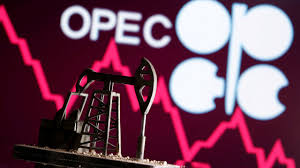Oil prices are set for a volatile start to the new year, as the next OPEC+ group meeting on production policy is expected to be set for the first trading day, January 4, Argus reported on Monday, citing delegates with the OPEC+ alliance.
The group managed to avoid a no-deal outcome at its last week meetings, which went on for days amid disagreements over how the OPEC cartel and its Russia-led non-OPEC partners would act next year with the pandemic still depressing fuel demand in the world.
The original plan for a 2-million-bpd increase of OPEC+ production as of January was watered down to a 500,000-bpd rise for January in a compromise agreement, largely seen as a positive outcome that avoided a break-up of the OPEC+ pact or even of OPEC.
The total production cut for January will thus be 7.2 million bpd, compared to the current 7.7 million bpd collective cut, while the ministers decided to hold monthly meetings to determine the oil production policy for the following month.
The producers in the pact “agreed to hold monthly OPEC and non-OPEC ministerial meetings starting January 2021 to assess market conditions and decide on further production adjustments for the following month, with further monthly adjustments being no more than 0.5 mb/d,” OPEC said at the end of last week’s meetings.
According to Argus’ sources, the meeting for January is expected for the 4th.
At that point, OPEC+ and its monitoring panels will have more information about how lockdowns and renewed restrictions in Europe and the United States will have affected global oil demand in the last months of this year. The alliance could also have more information about whether the recent strength in Asia’s crude oil demand will hold.
At any rate, an OPEC+ meeting on the first trading day for 2021 would be a wild ride for traders and speculators.

 Iran Energy News Oil, Gas, Petrochemical and Energy Field Specialized Channel
Iran Energy News Oil, Gas, Petrochemical and Energy Field Specialized Channel



